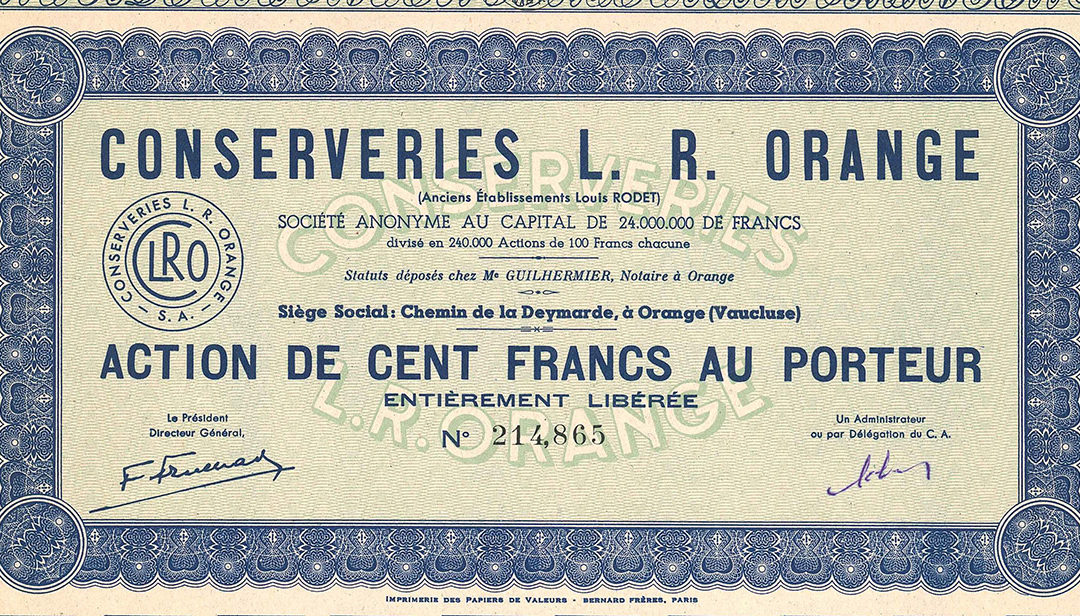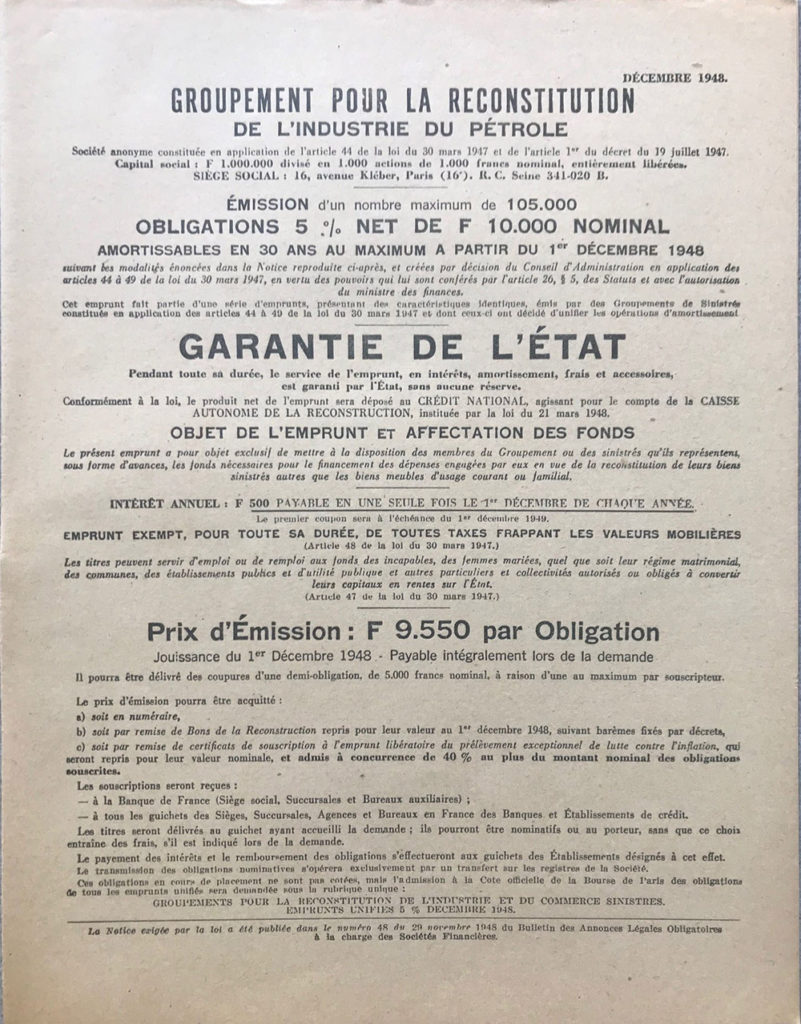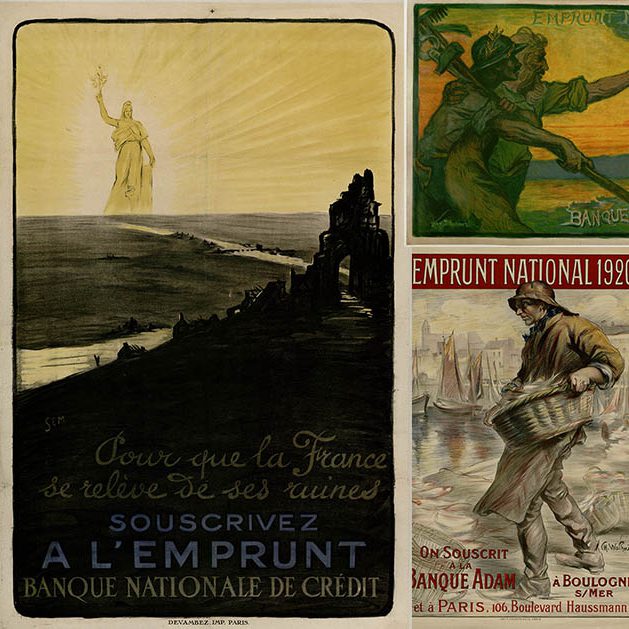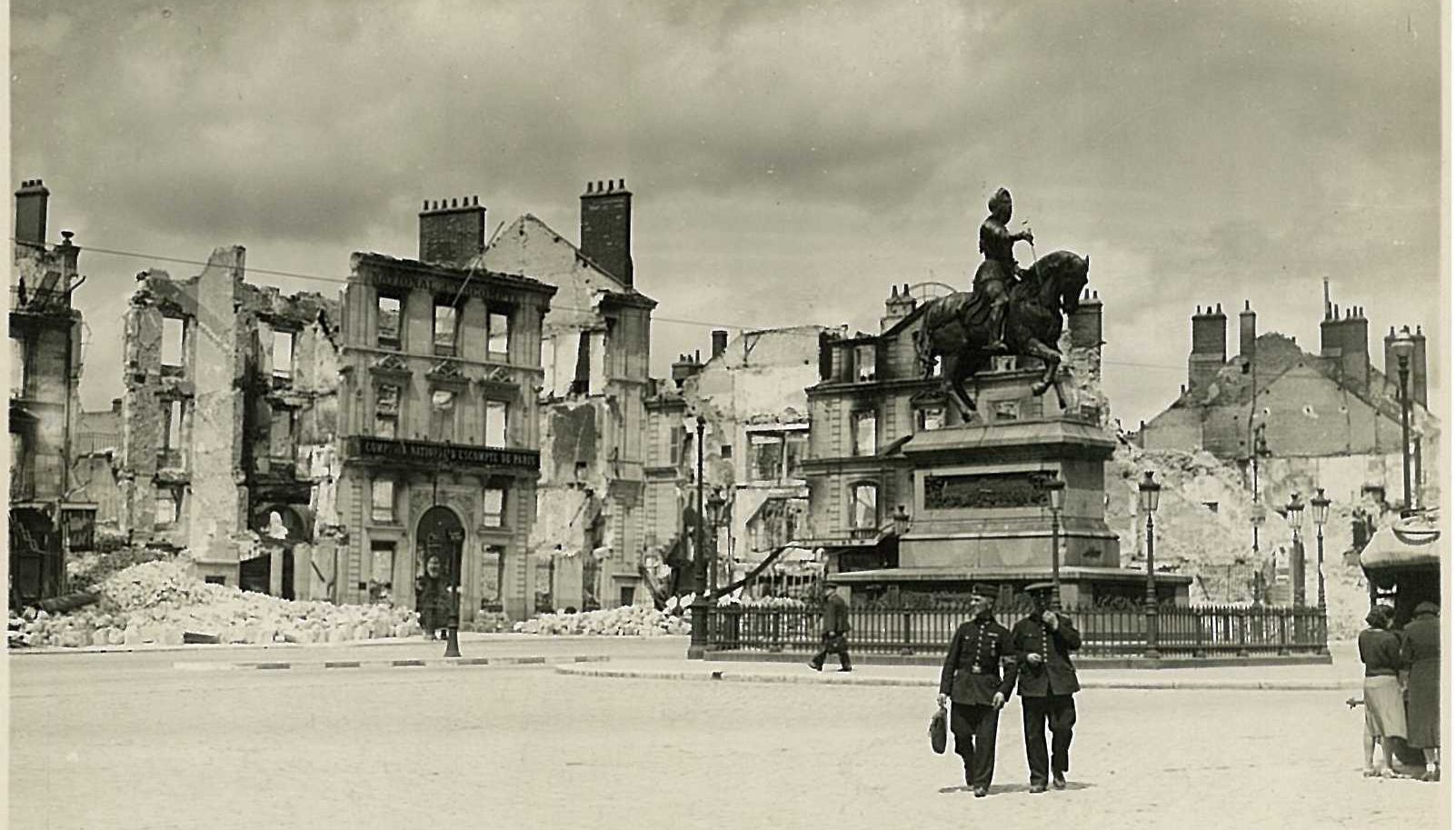RECONSTRUCTION 4/4: HOW PARIBAS SUPPORTED INDUSTRIES AFTER 1945

At the end of the Second World War, France was a country bled dry. Rationing was extended to all sectors of activity and, in particular, to everyday consumer goods. Faced with shortages in certain regions, the recovery of the national economy was urgent and Paribas played its part. By financing of the oil and food industries, Paribas helped the French economy recover more quickly.
The oil industry
At the end of the First World War, oil became a priority. At the end of the Second World War, it became a weapon. Rebuilding the oil industry was a necessity, since this commodity was a prerequisite for economic recovery as it was the basis for many pharmaceutical products, textiles, synthetic plastics and rubber, etc. It also met the energy needs of various industries, the modernisation of agriculture, the increase in road transportation, the development of commercial aviation and the improvement in the daily lives of the French people, as its energy value for heating was 1.5 times greater than that of coal. The refineries still needed to be made operational. In 1939, the capacity of the 15 refineries stood at 8 million tonnes of refined oil. This had fallen to 1.8 million tonnes by August 1945, with 3 refineries completely destroyed and 9 heavily damaged.

The modernisation plan, which brought refining capacity up to 15 million tonnes by 1955, reorganised import, refining and storage points – bringing them as close as possible to the points of consumption – and built up a petroleum fleet, pipelines and large-capacity trucks and tankers. However, these needs had to be financed at a time when the estimated cost of wartime destruction had been raised to 5.6 billion francs in 1939.
In May 1948, the “Groupement pour la reconstitution de l’industrie pétrolière” (Consortium for the Reconstruction of the Oil Industry) was formed, bringing together the major companies in the sector, such as Standard française des pétroles, Compagnie française de raffinage, Desmarais frères, La Jeanne d’Arc, Shell française and Société générale des huiles de pétrole. In December 1948, its chairman, Franz de Montricher, launched a 30-year loan of 1,050,000,000 francs with the Banque de Paris et des Pays-Bas as sole lead arranger. By 1952, oil production had reached 1939 levels. The gamble had paid off.
The agrifood industry
With rationing in place since 1940, the French population aspired to having choice in its diet after 1945. However, they would have to wait until 1949, as significant rebuilding of the agricultural and food industries was needed.
While agricultural industries produced primary crop-based products such as sugar, food industries processed or blended raw materials, semi-finished or finished products into consumable products. This was the case for pasta manufacturers, canning factories, food fats producers, commercial dairies, etc. However, the reduction in production capacity or even the destruction of an entire production chain is not without impact on public health or society as a whole.
At the same time, the pre-war production tool was rather decrepit and did not take into account the progress made in the food sector. After the war, the dairy sector now used new preparation, fermentation and preservation processes that opened up new markets. The recovery of yeast in distilleries for use in cattle feed or the incorporation of casein in biscuit-making developed new products that made pre-war factory equipment obsolete.

The first steps
Estimated at 5.884 billion francs in 1947, the damage to the entire sector was considerable and repairs were needed urgently. This is why, prior to the consortium, Banque de Paris et des Pays-Bas lent 997 million francs to these industries in 1946, in order to meet the most urgent needs. In April 1947, it then promoted the creation of the National Association of War Victims of the Agricultural and Food Industries (Association nationale des sinistrés de guerre des industries agricoles et de l’alimentation), whose aim was to bring together all professionals in the sector. While each activity already tended to have its own association with its own aims, the challenge for Banque de Paris et des Pays-Bas was to bring all these activities together under one consortium. From spring 1947, the bank’s directors carried out significant lobbying to associate and bring together all those impacted in the canning industry with those in the milling industry, the wine industry with the dairy industry, and the cider industry with the biscuit industry.
Nine months of negotiation for creating a consortium would not be in vain. On 7 January 1948, Banque de Paris et des Pays-Bas, acting on behalf of the National Association of War Victims of the Agricultural and Food Industries, submitted a request to the Ministry of Finance for authorisation to set up a consortium for the agricultural and food industries, which was to be called the “Groupement pour la reconstitution des industries agricoles et de l’alimentation et des professions connexes” (Consortium for the Reconstruction of the Agricultural and Food Industries and Related Professions), with capital of 500,000 francs. The founders brought together the main sectors of activity concerned, namely the dairy, sugar, milling and pasta industries, and included diverse activities such as canning factories, breweries, distilleries, chocolate factories, cider factories, starch product manufacturers, seed and livestock feed producers, refrigeration industries and salting plants. In 1949, vinegar factories, jam makers and chicory producers were also added to the consortium.
Support of all agrifood sectors
Each institution drew up a list of its needs. The bank would grant 34 million francs to Cassegrain in Lanriec and 15.6 million to Petitjean in Hennebont.

In the dairy industry, 128 million francs would be granted to Lait Gloria in Carentan, 300 million to the Charles Gervais dairies in Ferrières-en-Bray and 57 million to the Lepetit dairy in Saint-Pierre-sur-Dives. 664 million francs would be granted to the Grands Moulins de Pantin and 472 million to the Grands Moulins Vilgrain in Nancy for the milling industry. The Say sugar factories in Abbeville, the Erstein factories and the Béghin factories in Thumeries and Corbehem would be lent 198, 192, 39 and 36 million francs successively. The disparity in the sums is explained by the different levels of claims made by the companies and the need for modern equipment for certain businesses. This was the case for the Kronenbourg breweries, who used the compensation of 120 million francs to reconstitute their stock and improve production tools. Biscuiteries nantaises used 25 million of the 28 million for the modification of its production line with adapted premises whilst the St Hubert dairy in Nancy used 7 million of the 10 million granted for the same purposes.

But the bank did not stop there. Through its contacts on the other side of the Atlantic, Banque de Paris et des Pays-Bas offered its clients an engineering service for new production methods, with modern US production techniques adapted to French standards.








